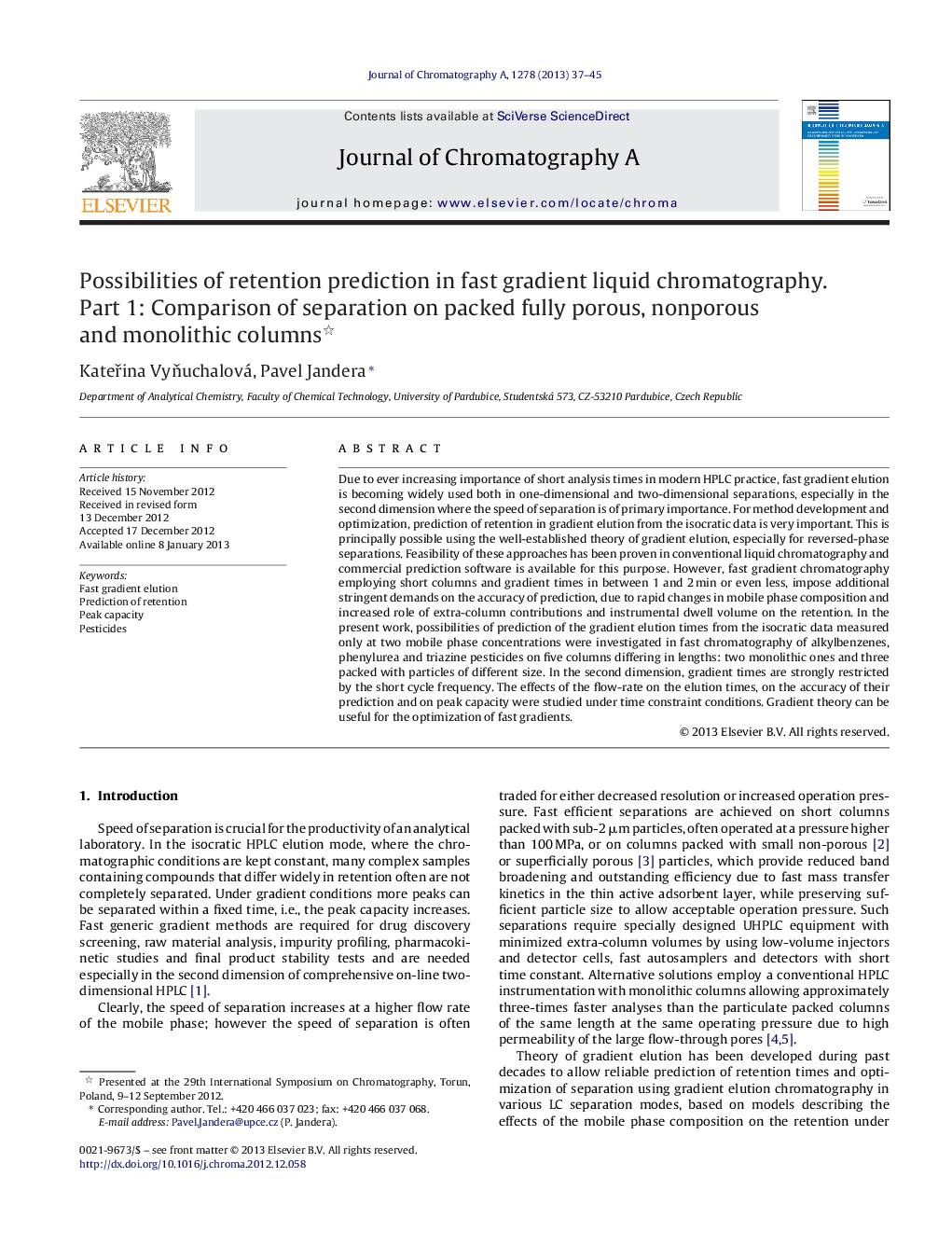| کد مقاله | کد نشریه | سال انتشار | مقاله انگلیسی | نسخه تمام متن |
|---|---|---|---|---|
| 1201446 | 1493648 | 2013 | 9 صفحه PDF | دانلود رایگان |

Due to ever increasing importance of short analysis times in modern HPLC practice, fast gradient elution is becoming widely used both in one-dimensional and two-dimensional separations, especially in the second dimension where the speed of separation is of primary importance. For method development and optimization, prediction of retention in gradient elution from the isocratic data is very important. This is principally possible using the well-established theory of gradient elution, especially for reversed-phase separations. Feasibility of these approaches has been proven in conventional liquid chromatography and commercial prediction software is available for this purpose. However, fast gradient chromatography employing short columns and gradient times in between 1 and 2 min or even less, impose additional stringent demands on the accuracy of prediction, due to rapid changes in mobile phase composition and increased role of extra-column contributions and instrumental dwell volume on the retention. In the present work, possibilities of prediction of the gradient elution times from the isocratic data measured only at two mobile phase concentrations were investigated in fast chromatography of alkylbenzenes, phenylurea and triazine pesticides on five columns differing in lengths: two monolithic ones and three packed with particles of different size. In the second dimension, gradient times are strongly restricted by the short cycle frequency. The effects of the flow-rate on the elution times, on the accuracy of their prediction and on peak capacity were studied under time constraint conditions. Gradient theory can be useful for the optimization of fast gradients.
► Fast 1–2 min gradient chromatography can be described by conventional theory.
► Gradient data can be predicted based on only two scouting isocratic experiments.
► Extra-column contributions and instrumental dwell volume should be considered.
► At a constant gradient time, there is an optimum flow rate for maximum peak capacity.
► The approach is suitable for optimization of gradients in the second dimension of 2D HPLC.
Journal: Journal of Chromatography A - Volume 1278, 22 February 2013, Pages 37–45